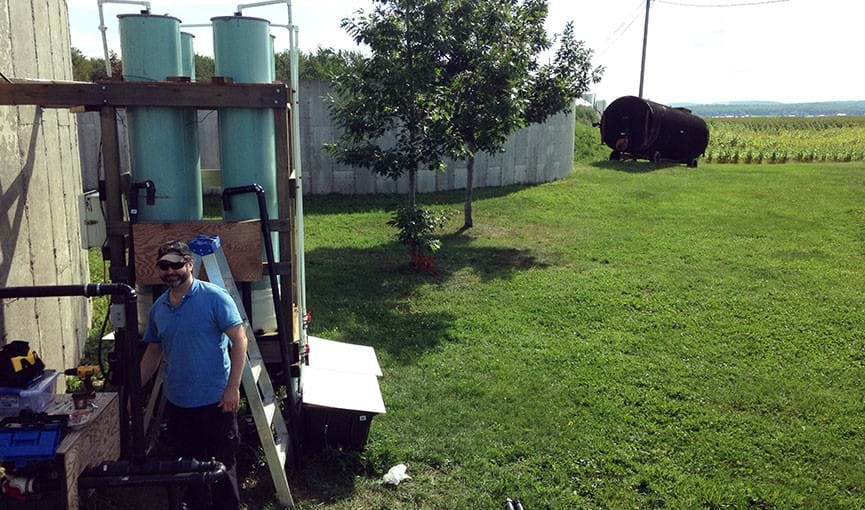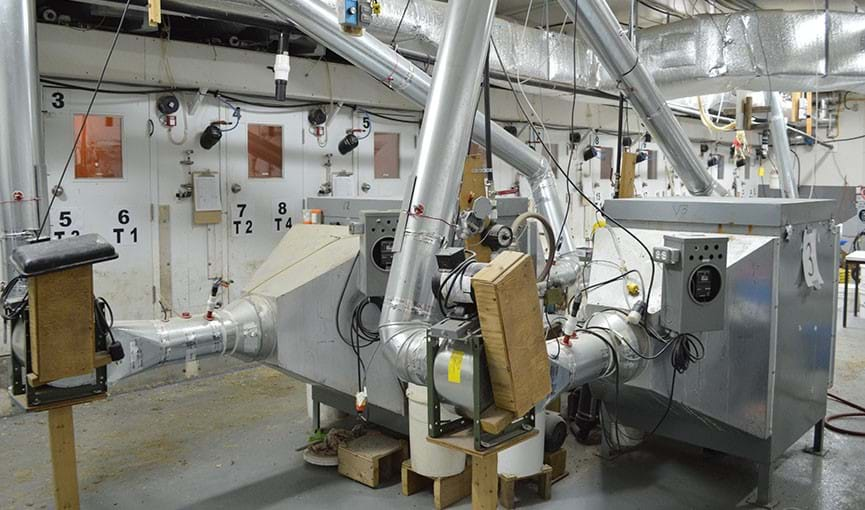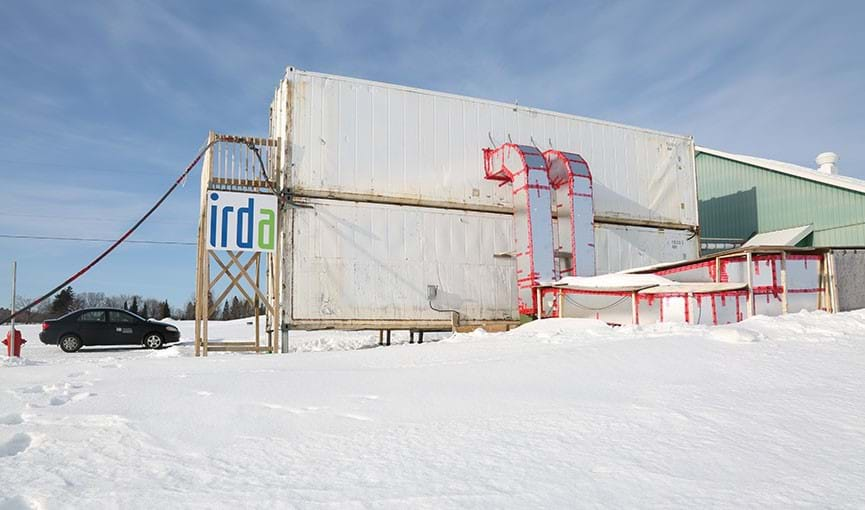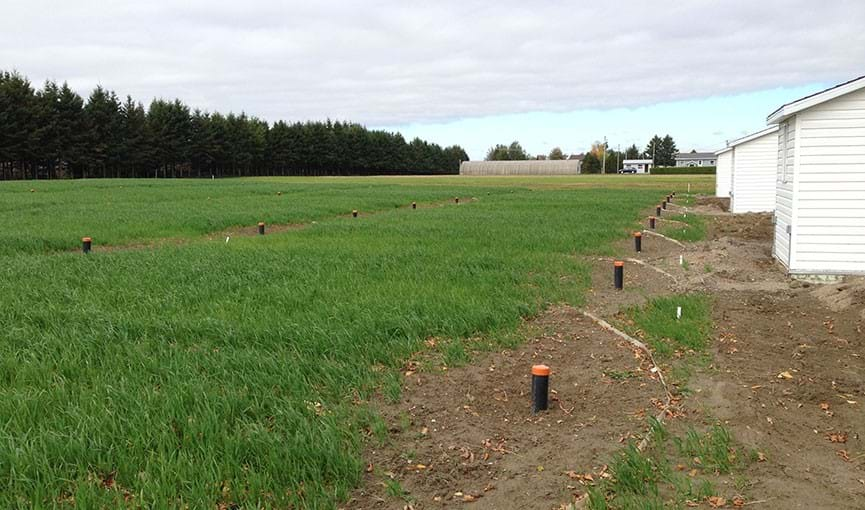Air quality
A source of airborne irritants such as odours, dust, and gas
Farming practices often have a profound impact on the air quality of the surrounding environment. For example, manure spreading can prompt conflicts between neighbours, and hydrogen sulfide, a toxic gas emitted by manure, can lead to serious health problems for workers in confined environments. Air is also a major vector for the transmission of human and animal diseases, with their attendant economic repercussions.
New technologies and modern engineering allow emissions from fields, manure storage facilities, and farm buildings to be reduced at the source or treated to lessen their impact. With its infrastructure and facilities, IRDA is able to characterize the air quality on farms and develop or recommend practices that reduce pollution. For example, oil-fired heating systems can be modified to make use of renewable energies, which, besides lowering costs, cut greenhouse gas emissions. Changing livestock feed may also have the beneficial effect of diminishing the gas released by animal dung. To address a particular producer’s problem, IRDA also tested a system that rapidly incorporates manure incorporation into the soil with the goal of alleviating the nuisance caused by odours from traditional spreading practices.
Concrete recommendations to address specific needs
When farmers alert us to their specific needs, limitations, and constraints, IRDA experts analyze the situation and recommend appropriate actions. These recommendations help farmers and their consultants select the most effective agricultural practices, to reduce negative impacts on air quality.
IRDA’s team is developing an air scrubbing system to cut gases and odours arising from swine production by 50% to 95% and thereby reduce the risk of disease transmission.






